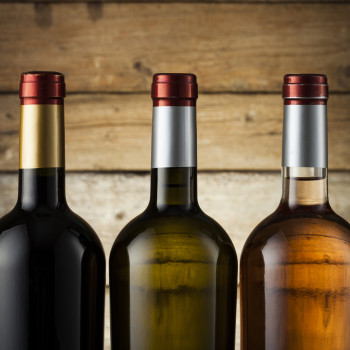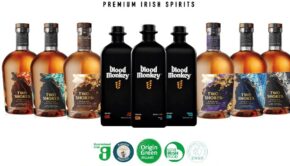ShelfLife Special Tasting: Easy New Year drinking

Helen Coburn highlights some bargains that will help add a little sparkle to a grey January
15 January 2015
Getting a good wine for under a tenner often means looking out for special offers,
It’s something of a cliché to focus on easy, budget wines for a January feature. But the reality is that almost everyone cuts back on spending at this time of year, and shops need to have a decent stream of sales until matters pick up, as they tend to do, from Valentine’s Day onward. Another unwelcome reality is that the price barrier for decent drinking has risen from around €9 to almost €12. Getting a good wine for under a tenner often means looking out for special offers, as most wines with settled prices below €9 don’t yield much in terms of interest or concentration.
Buying a decent red wine on a budget has, I think, become more difficult than buying white. A few years ago, there was a fashionable outcry among journalists about over-oaking of wines and some of it was justified. The demand for less oak was echoed by consumers who often didn’t realise that a lot of red grapes need some oaking, even if it’s just with the use of staves, chippings or, if the budget buyer is lucky, a proportion of old barrels.
Naturally producers of budget wines were delighted with the trend: staves, chips and, especially barrels, are a significant cost. As well as that, red wines which aren’t oaked can be released soon after making: great for cash flow! The difficulty is that a good deal of entry point wine is produced from high cropped grapes and the juice can lack concentration. Without the spiciness of wood to fill out the flavours, some producers have clearly plugged the gap by leaving in additional residual sugar at the end of juice fermentation. All too often, this results in a sickly, sweetish wine which tastes non-vinous on the palate.
Some grapes have a structure which can get away with early release without oaking, but cheap, young tempranillo and sangiovese, for example, has become something to avoid. Read the back label, especially if the wine is from a very recent vintage and made from a grape variety which is traditionally oaked and aged. You may have to pay more for something which has seen a bit of wood or bottle age, but it will be worth it.
When buying fresher whites, consumers should now be seeking 2014 vintage and, for traders, it’s a good time for special deals on older stocks, especially of budget sauvignon blanc and pinot grigio. Thanks to screw caps, these styles stay zesty longer than they used to, but the cheaper offerings are best drunk within a year or so.
Here are some bottles to stretch the euro in your wallet. All were tasted through 2014 and all deliver well on price.
Whites
Oyster Bay Sauvignon Blanc NZ 2014 (Cassidy, Tesco, Dunnes, independents €11). Ripe green apple, lime and apricot juggle around this tasty palate.
Villa Maria Sauvignon Blanc NZ 2013/4 (Barry & Fitzwilliam €12). Closer in style to the French classic. Good with chicken and pork.
Castillo de Molina Sauvignon Blanc Chile 2014 (Dunnes, €12) We mentioned this at Christmas and it’s great value for what you get. Zesty flavours and good length.
Cono Sur Bicyclette Sauvignon Blanc 2014 (Findlater, multiples, €9). Always a little soft in style but with decent apple flavours with a hint of tropical fruit. Perfect for parties. Weighty enough for roast white meats.
Muga Blanco Rioja Spain 2013 (Comans, multiples, independents, €13). Barrel fermented in old oak, this has good weight, with smooth dried citrus flavours. Delivers on price.
Faustino VII Rioja Spain 2013 (Gleeson Gilbey €11). Elegant wine, perfect aperitif and very good with white fish and cold salmon.
Gallo Family Vineyards Chardonnay California 2013 (widely available, €10) Ok, it’s a bit ripe and populist, but it’s tasty, with lots of warm lemony flavours. Ideal with pork, turkey and white fish.
Yalumba Y Series Viognier Australia 2013 (Cassidy, independents, some multiples €11). Citrus and apricot are the flavours here and it’s good with white pasta dishes and stir fries.
Reds
Cono Sur Cabernet Sauvignon Chile 2013 (Tesco, multiples, independents €9). One of the best cabernets at the price; great party red but enough weight for food.
Casillero del Diablo Merlot Chile 2013 (Irish Distillers, Tesco, multiples €9). Tasty plum fruit and ideal party red for those who find cabernet a bit over structured for easy drinking.
Campo Viejo Reserva Rioja Spain 2009 (Irish Distillers, Tesco, independents €13). I noticed some Christmas offers on this and hopefully some are still around. Slightly leathery plum fruit and gentle spice make it a perfect winter warmer.
Trapiche Reserva Pinot Noir Argentina 2012 (Comans, multiples, €12). Part of a range which delivers really well, this has good varietal character and decent length.
Mas Montel ‘Petit Syrah’ Pays du Gard France 2011 (Le Caveau, independents, €10.50). Lively flavours of plum and berry make this tasty, hearty and warm. Good with casseroles.
Santa Helena Shiraz Chile 2013(BWG, Spar, Mace, €8). Spicy, lively stuff, good with a mid-week chop or meat pie. Good for parties too.
Santa Helena Vernus Pinot Noir Chile 2013 (BWG, Spar, Mace, €14.99). Easy summer fruits yet decent tannins make this great value. Watch that alcohol, though; it’s high.
Wakefield Estate Cabernet Sauvignon 2012 (Cassidy, SuperValu, independents €14). Wakefield wines used to be terrific value for money but that was before increased excise and the high value of the Aussie dollar. They still deliver well on price though, and this is elegant stuff, well up to any dinner party.
Wine Trade Ups and Downs
Ups
Recent research indicates that the favourite Christmas morning tipple is now sparkling wine, whether as Champagne, prosecco or Buck’s Fizz. Even among oldies, it seems, it has eclipsed sherry as a festive pre-prandial. Gin and tonic is the second favourite drink, staging a comeback even among the young, who have tended till recently to favour vodka and shots.
Growers in France’s Loire Valley have begun a promotional push for Muscadet, the dry white produced in the western Loire round the city of Nantes. It’s wine that lovers of unoaked chardonnay and pinot grigio should have a look at. Due in part to shifts in fashion, Muscadet has been underrated for at least a decade. But during those years there has been a huge improvement in winemaking in the region and the best wines are now extremely good value for money.
Downs
It may be high summer there, but several spectacular rain and hail storms have hit the vineyards of Australia’s New South Wales. According to local media, some producers have lost virtually all their fruit. Western Australia has also suffered and it’s reckoned that several regions will end up with a crop 20% smaller than average.
Over a few months, the value of the US dollar has risen from $1.38 to the euro to around $1.22 at the time of writing. This will soon impact on the cost of US wines imported into the EU, with the problem compounded in Ireland by high excise. A strong dollar also means that imported wine becomes cheaper for US consumers, so that the local product becomes harder to sell on home as well as export markets. As if that wasn’t enough, the Australian dollar fell to a four year low toward the end of 2014, giving an unexpected advantage to one of the US wines’ liveliest competitors.



 Print
Print






Fans 0
Followers